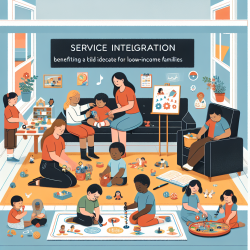As a Special Education Director, I frequently attend conferences, read publications, and participate in webinars to stay informed about the latest trends and challenges in our field. One pressing issue that continues to emerge is the diminished capacity of schools to meet student mental health needs. According to the latest findings from the National Center for Education Statistics (NCES), this issue is more critical than ever.
Current Statistics and Trends
Recent NCES data reveals that just under half — 48% — of schools report being able to effectively provide mental health services to all students who need them. This is a significant decline from the 2021-22 school year, when nearly 58% of schools felt equipped to handle these needs. The COVID-19 pandemic had initially mobilized schools to ramp up social and emotional support for students, but sustaining these efforts has proven challenging.
Challenges: Staffing and Budget
The primary barriers to providing adequate mental health support are staffing and budget constraints. Over half of public schools (55%) cite mental health professional staffing as a limiting factor, while 54% point to insufficient funding. These limitations make it difficult to maintain the level of support that students require.
Staffing Shortages Across the Board
Beyond mental health professionals, schools are facing broader staffing shortages. More than half of schools (59%) anticipate needing to fill multiple non-teaching vacancies before the next school year. Even more concerning, 67% of schools expect to have multiple teaching vacancies. This widespread shortage further strains the resources available for student support.
Why This Matters
These statistics are more than just numbers; they represent real challenges that impact the well-being and academic success of our students. Mental health support is crucial for helping students navigate the complexities of their academic and personal lives. Without adequate support, students may struggle with issues that affect their learning and overall development.
What Can Be Done?
Addressing these challenges requires a multi-faceted approach:
- Advocacy for Funding: Schools need to advocate for increased funding at the local, state, and federal levels to ensure they have the resources necessary to hire and retain mental health professionals.
- Creative Staffing Solutions: Exploring partnerships with online therapy providers like TinyEYE can help bridge the gap in mental health services.
- Professional Development: Investing in the training and development of existing staff can also help schools better support their students' mental health needs.
As we navigate these challenges, it's essential to keep the conversation going and to seek innovative solutions that can help our schools better serve their students.
For more information, please follow this link.










